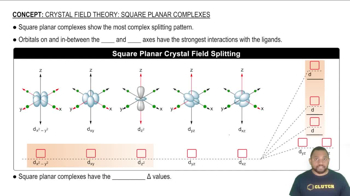Textbook Question
(a) Does CS2 have a dipole moment? If so, in which direction does the net dipole point? (b) Does SO2 have a dipole moment? If so, in which direction does the net dipole point?
1
views

 Verified step by step guidance
Verified step by step guidance



(a) Does CS2 have a dipole moment? If so, in which direction does the net dipole point? (b) Does SO2 have a dipole moment? If so, in which direction does the net dipole point?
(b) It turns out that ozone, O3, has a small dipole moment. How is this possible, given that all the atoms are the same?
(c) Does the molecule BF2Cl have a dipole moment?
(a) Consider the following two molecules: PCl3 and BCl3. Which molecule has a nonzero dipole moment?
Predict whether each of the following molecules is polar or nonpolar: (a) IF, (b) CS2, (c) SO3, (d) PCl3, (e) SF6, (f) IF5.